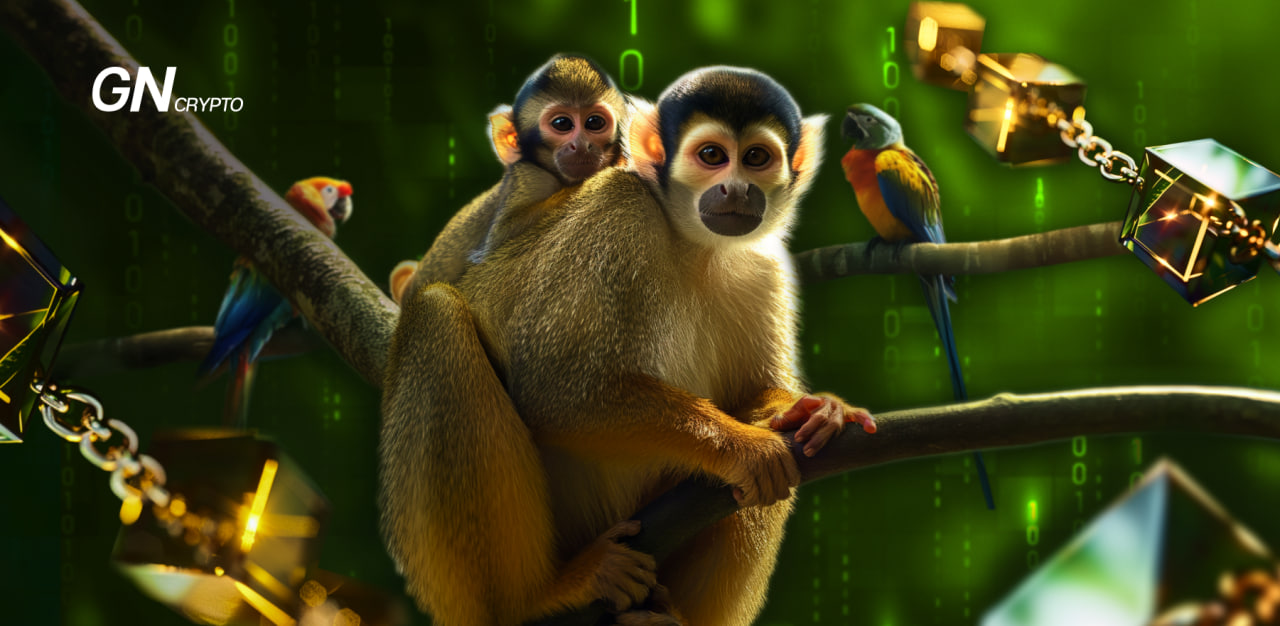How AI and Blockchain Can Help Save Endangered Animals

News about people hunting or selling endangered animals pops up every day, despite warnings. Business Insider researched what species are available to buy online. Shockingly, they found squirrel monkeys, exotic birds, several species of turtles, and many other animals listed on Facebook. These animals were available for purchase within just 20 minutes.
On this page
Is it possible to gain information about endangered species, control data, and provide animals with necessary protection? What is the role of technology here? We’ll explore in this article.
Endangered Species: How Critical Is the Situation
The crisis of wildlife is a crucial problem in 2024. Various reasons for this are the loss of natural habitat, overhunting, and overfishing. Current data shows that over 44,000 species are threatened with extinction. Among them are African forest elephants, European bison, black rhinos, geometric tortoises, and others.
Number of species threatened with extinction. Source: IUCN Red List of Threatened Species
Tech developers and researchers couldn’t ignore these alarming statistics. The industry is increasingly focusing on sustainability, with basically any aspect of it offering nature-focused solutions. Among them, Blockchain and AI play important roles by making it possible to track data accurately, analyze, and change the current state.
What’s the Role of AI in Saving Endangered Species
Saying AI, many of us immediately think about ChatGPT, MidJourney, and other engaging apps. However, scientists using the technology to save wildlife probably think differently.
Collecting data about wildlife has been a key challenge. With the advent of AI, scientific research and development have gained new possibilities. Tools like smart sensors, machine learning predictions, and real-time analytics optimize the process.
With its smart problem-solving capabilities, Artificial Intelligence helps in recognizing species, counting their numbers, monitoring changes, and spotting illegal activities.
According to a report by Wildlabs.net:
AI can learn how to identify which photos out of thousands contain rare species, or pinpoint an animal call out of hours of field recordings.
By automating data collection and analytics processes, AI enables a much more efficient understanding of nature's state and adaptation than relying solely on human effort.
What’s the Role of Blockchain in Saving Endangered Species
While AI often brings to mind technologies like GPT, blockchain is commonly linked to Bitcoin and other cryptocurrencies. Yet, the potential of blockchain goes far beyond crypto. Blockchain is a secure, and decentralized database that, once updated, cannot be altered. So, how can this be relevant for wildlife protection?
Number of endangered species on the Red List from 1996 to 2023: Source: Statista
The unique structure of blockchain serves as a collaboration tool between governments, scientific groups, and tech companies. Sharing data through a distributed database ensures the accuracy of information, makes it accessible, and enables the development of strategies.
Different startups and organizations have integrated blockchain into their efforts of animal protection by tracking natural resources, animal habitats, and supply chains.
The World Wildlife Fund mentions:
Blockchain allows digital information to be distributed but not copied, making it a valuable tool for a broad range of wildlife conservation projects.
Solutions, like DAOs, tokenized assets, and community currencies provide transparency in resource management and fundraising. This way, blockchain brings data-awareness and responsibility for decisions.
Tech Promise in Saving Endangered Animals
It wouldn’t be realistic to expect that technology will solve all the problems related to endangered animals. Enhanced success requires joint efforts, approaches, and resources. Here AI and blockchain make a perfect match. For example, AI can help detect changes in animal behavior, while through blockchain it’s possible to record the information on-chain and respond to changes providing the necessary environment for animal protection.
The content on The Coinomist is for informational purposes only and should not be interpreted as financial advice. While we strive to provide accurate and up-to-date information, we do not guarantee the accuracy, completeness, or reliability of any content. Neither we accept liability for any errors or omissions in the information provided or for any financial losses incurred as a result of relying on this information. Actions based on this content are at your own risk. Always do your own research and consult a professional. See our Terms, Privacy Policy, and Disclaimers for more details.




























